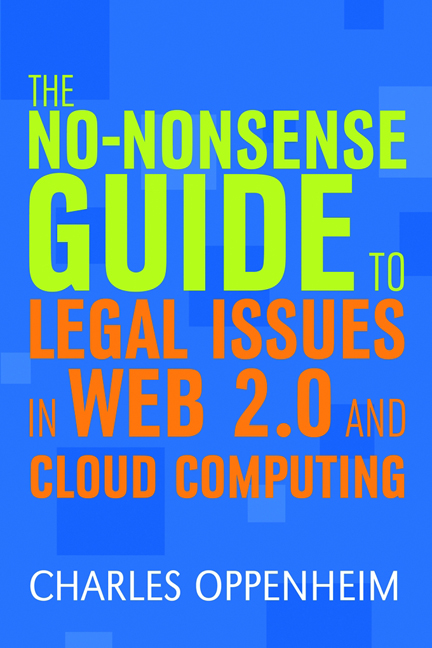Preface
Published online by Cambridge University Press: 08 June 2018
Summary
The internet in general, and Web 2.0 in particular, have become one of the most important means whereby individuals and organizations communicate with one another these days. That communication may be for the purposes of business or pleasure, and may be between people or organizations that know each other, or which have never met before. The result of this dramatic shift in the way people and organizations communicate is the rise of numerous legal problems associated with the use of these new media.
The fundamental problem regarding the legal environment for electronic information creation and communication remains as it always has been: the law is complex, often counter-intuitive, varies from country to country, and almost invariably is behind the times in its technology and the culture of users. Those who interact with such services in their professional capacity, say as librarians, information managers, owners of Web 2.0 services or publishers, therefore have a problem in second-guessing what the law might have to say about particular actions (or lack of action) they might take in regard to the uses they make of the services.
I am not a lawyer. I am a retired academic who has a great interest in the way the law interacts with electronic information. I first got interested in the overlap between the law and information in 1970, when I got involved in patent law and patent information. My interest spread to copyright in 1982, when I got sucked into a fascinating copyright infringement case by accident (ask me about it some time). I got involved in liability for information provision, data protection and electronic information licensing in 1984 through my particular job with what was then called Pergamon Infoline. Again, my job role at the time with Reuters led me into defamation law around 1990. Nowadays, pretty much everything to do with electronic information law is grist to my mill. Nonetheless, I must stress that this book is not a legal textbook aimed at lawyers, but rather, as its title implies, a guide for the perplexed non-lawyer. It should provide a pointer to current issues. It has a focus on Web 2.0, but covers topics relevant to all methods of using electronic information. Nothing in this book is legal advice, and hence the usual caveat.
- Type
- Chapter
- Information
- Publisher: FacetPrint publication year: 2012



